January 30th 1045 GMT Sun
I caught sunspots on camera, using my normal method and settings bit it was ruined by cloud.
Undaunted, I made a drawing based on the sunspots.
January 29th 2315 GMT Meteor Hunt and Constellation Shots
The deep sky session was not perfect but exceeded my expectations. I returned with my camera with my wide angle lens. I used my usual settings of 18mm focal length, ISO 6400 and 6 seconds exposure.
I did not detect any meteors nor other interesting phenomena in the first 60 frames but stacked them to produce constellation shots. Although other constellations were visible, only Leo Minor and Cancer were shown in their entirety. Ironically enough, the Beehive Cluster (M44) is shown.
The next 60 frames were very similar but slightly clearer.
There was some movement, due to Earth's rotation but the view was still quite similar for the next 60 frames.
At 2302 GMT, I caught a bright, unidentified object near Regulus, the brightest star in Leo.
Following the pattern of stacking 45 of 60 frames, the next image shows Leo climbing out of the murk near the horizon and joining Leo Minor and Cancer.
At 2311 GMT, I caught a bright, short trail meteor near Regulus. I would have placed it in the Leo Minorids shower but now the radiant of this shower has moved to Virgo.
At 2315 GMT, two dots appeared to the south of Regulus.
The next stack was similar to the previous one but shows Leo a bit more clearly.
At 2321 GMT, I caught two strange objects south of Leo.
At 2331 GMT, there was a transient "double star" and a star next to a short, red trail. I was starting to wonder about little green men.
In the next set of 60 frames, Cancer had rotated from the field of view, Leo was more clear and Coma Berenices (featuring the open cluster Melotte 111) came into view to the east.
At 2336 GMT, two strange objects, or was it a single strange object with a strange trail, appeared near Denebola, the second brightest star in Leo.
Seconds later a very strange object appeared near Algeiba, the 3rd brightest star in Leo. Flying saucer? More like a hockey stick!
A stack of 45 of the next 60 frames saw a slightly better view of Leo, Leo Minor and Coma Berenices, as they had climbed further from the murk at the horizon.
This, too, was similar, with the next 60 frames being even further from the murk.
The final shot was composed from 70 frames but had a lot of distortion at the edges.
January 29th 2250 GMT Deep
Sky Shots
This session did not go well, with only
one shot managing to find the target. I has having problems with focussing and
aiming the camera, as bending was causing me pain.
Although I took some “sighting” shots, I
used md DSLR at 300mm focal length, ISO6400 and 2 seconds exposure, aiming at
M41, the Orion Great Nebula (M42) and the Beehive (M44).
Against all odds, I caught some frames of M41 but they were slightly out of focus. I processed a single frame, as the others did not stack.
M44 did not stack, though.
January 29th 1800 GMT Dusk
Session
Jupiter was low in the west. As I needed
a few minutes to recharge my camera batteries, I did a quick binocular scan
with my 15x70 binoculars. I could not detect any jovian moons. I saw that the
main stars of Orion were visible already and I managed to see the Orion Great
Nebula (M42). I also saw many of the brighter Hyades but no Pleaides (M45).
As it was about an hour away from true
darkness, I used a shorter exposure of one second but otherwise used my
standard jovian moon settings of 300mm focal length and ISO 6400. I did not catch any.
I had only managed two successful
attempts to capture Jupiter’s cloud belts out of tens of tries. I had a few
goes at 300mm focal length, ISO 100 and various exposures. This one worked at 1/50 second exposure. There are hints of the cloud belt.
January 27th 1840 GMT Big Session
Jupiter was near the horizon and I had to go out the front door, as my camera would not reach over the fence. I started on other targets before I realised that I had forgotten to put the memory card back in!
It was too late to catch Jupiter but I took some photos of the Hyades at 70mm focal length, ISO 6400 and 8 seconds exposure. I stacked the best 40% of 10 frames with 5 dark frames.
While taking the shots, I checked Betelguese and estimated that it had brightened to magnitude 0.4.
I used the same settings for the Orion Great Nebula (M42) and Orion's Belt. I used 5 light frames and 5 dark frames.
This set of frames also contained a faint meteor.
I later reprocessed this image to show it more clearly. It was to the right of Orion's Belt.
I then changed my settings to 18mm focal length (changed lens), ISO 6400 and 6 seconds exposure. I stacked 30 of 40 frames to catch this shot of Orion. It also shows Lepus to the south.
I stacked 45 of the next 60 frames to obtain this shot.
I followed up with the next 60 frames, as before.
At 1851 GMT, I caught an unidentified object west of Rigel. I don't know what it was. I think it was toom short to be a meteor trail and it looked slightly twisted.
I processed the next set of frames, as before.
I continued with the same pattern and Canis Minor came better into view.
At 2033 GMT, I caught another UFO on camera, not far from Sirius.
At 2041 GMT, I caught another UFO, this time near Rigel.
At 2043 GMT, I caught another event near Rigel.
Just one minute later, something else turned up near Sirius.
At 2047 GMT, a bright object just to the east of Orion was probably a short-trail meteor.
January 26th Moon with Mars Reprocess
I reprocessed an image of the Moon with Mars from September 5th 2020.
January 26th
1025 GMT Sun
The sky
cleared revealing a bright sun. Although the sunspots on the Learmonth images
were small and probably too small to detect with my DSLR, I had a go anyway at
300mm focal length, ISO 100 and 1/2000 second exposure, using a Baader filter.
The focus was poor in all shots and it did not work.
January 26th 0900 GMT Moon
After several days of hurt, I finally had a clear patch of
sky. The Sun was behind a bank of cloud but a thick waning crescent moon was
low in the south. I snapped it with my DSLR at 300mm focal length, ISO 400 and
1/400 second.
Unfortunately, the daylight and low elevation left the image rather grainy.
The original image was a widefield shot of Jupiter, two of its moons and a background star. I concentrated on the planet and its moons.
Again, this was one that found its way into the books. Melotte 20 is one of my favourite deep sky objects and I did a reprocess from September 5th 2020.
I reprocessed another shot from May 5th 2020.
I processed a further lunar stitch from May 5th 2020.
I reprocessed a lunar DSLR shot from September 4th 2020.
I reprocessed another image from the following evening, 34 hours later.





































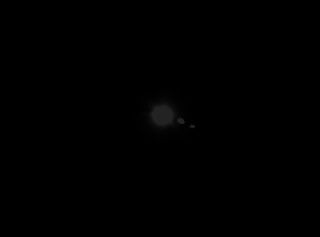



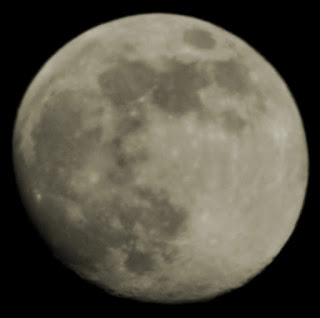
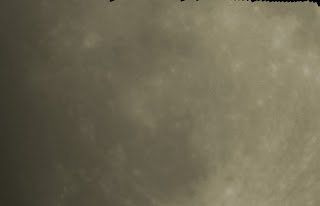





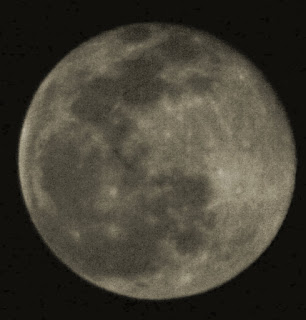











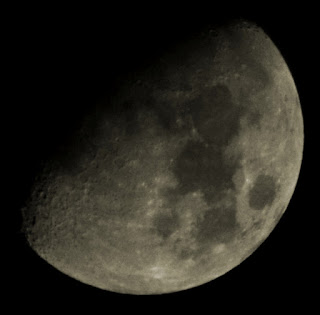





















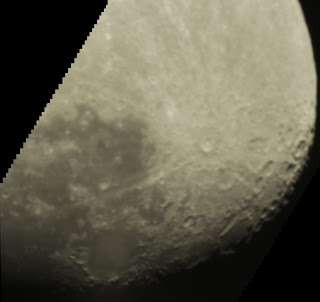




No comments:
Post a Comment